Introduction & Specifications, Pricing and Availability
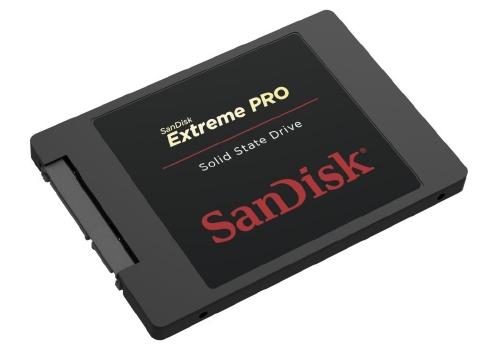
We wanted to publish SanDisk's new Extreme PRO 960GB SSD first since its performance was so far above the other 1TB class SSD products on the market. The smaller 480GB delivers the same exceptional performance but in a crowded market segment. Setting the Extreme PRO apart from other drives in the 512GB class size is SanDisk's new 10-year warranty and performance that doesn't decrease when the drive is worked hard.
SanDisk designed the Extreme PRO series for computer gamers and enthusiasts. Anyone who writes a lot of data to the drive at once can benefit from the Extreme PRO's talent. Modern games tip the scales at over 30GB each, and most gamers slam the storage media with more than one game after a fresh install of Windows. Most SSDs will suffer a performance hit by the time just a few games hit the flash, but the Extreme PRO is different; it's built to take the abuse and still perform at a high level. This means when you're finally ready to play your game, the drive is ready to deliver the high performance you paid for.
Specifications, Pricing and Availability

SanDisk went with three capacity sizes for the Extreme PRO: 240GB, 480GB, and 960GB. These are overprovisioned capacity numbers. Each drive has flash area reserved for background activity like garbage collection and other flash management tasks. The sequential read performance for all three capacity sizes is the same at 550 MB/s. The sequential write performance is a bit higher on the 240GB model, 520 MB/s, and 515 MB/s for the 480GB and 960GB models. SanDisk is very conservative with their published performance numbers, and as we've shown several times in the past, 4-corner performance doesn't equate to real-world performance.
Random reads and writes come in at 100k IOPS read and 90k IOPS write. Over the past several months, several products tested performed significantly slower in smaller capacity sizes. SanDisk didn't follow suit with the shift to 128Gbit die that robs lower capacity products of performance. The entire Extreme PRO series uses premium 1Ynm (A19, 19mm x 19.5mm) ABL MLC Toggle flash in 64Gbit capacity. While more expensive than using 128Gbit die, 64Gbit die allow for higher interleaving and thus higher performance. The Extreme PRO is a performance product despite the mild specifications.
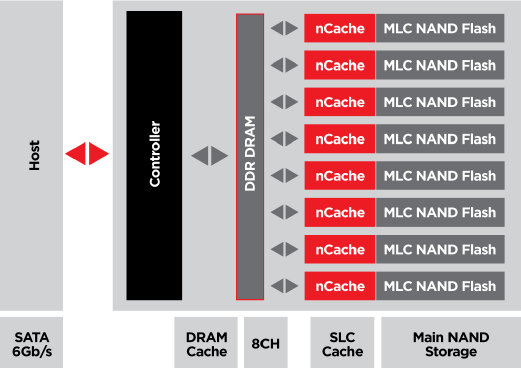
To coincide with the release of 1Y 19nm flash, SanDisk has also updated nCache. nCache debuted on the Ultra Plus SSD quite a while ago and went unchanged on the Extreme II SSD a few months later. The technology of using a small amount of MLC flash in SLC mode has gone bi-directional in the latest revision, and it is now optimized for mixed workloads. SanDisk calls the latest revision nCache Pro.
Until you see the actual performance data, the biggest news surrounding the Extreme PRO series has to be the new 10-year warranty. To put 10 years into perspective, 10 years ago I tested the fastest consumer hard drive on the market, a Western Digital Raptor with 74GB of capacity. For some of you, that was enough, but to really drive the point in, ten years ago Cameron was at Quakecon in Texas and a majority of PC gamers still used bulky CRT monitors. SanDisk's commitment to Extreme PRO users isn't just a nice marketing pitch either. As one of only six NAND flash manufacturers, the company will be around ten years from now to support the products.
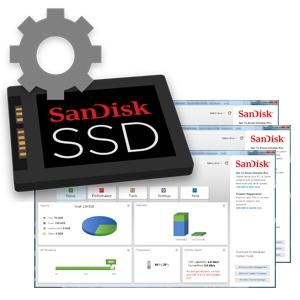
Another new feature with the Extreme PRO actually works with all of SanDisk's consumer SSDs. SSD Dashboard is free for all SanDisk SSD owners and works to keep system performance high and to give users additional, value added features such as drive cloning. At the time of writing, not all of the features were working. In the coming weeks, we'll have an SSD Software Face-off and compare each company's software.
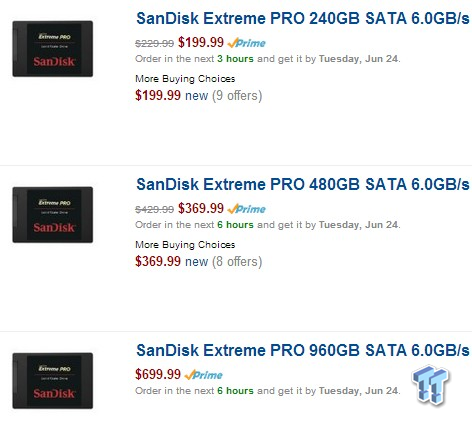
When we published the 960GB model, Amazon had sold out of every Extreme PRO capacity size, and Newegg had increased the price to slow demand. Newegg was sold out of the largest capacity size, and the two smaller models were higher than MSRP. Amazon shows all three capacity sizes in stock, and the 480GB model we're focusing on today is at $369.99 MSRP.
PRICING: You can find the SanDisk Extreme PRO (480GB) for sale below. The prices listed are valid at the time of writing but can change at any time. Click the link to see the very latest pricing for the best deal.
United States: The SanDisk Extreme PRO (480GB) retails for $369.99 at Amazon.
SanDisk Extreme PRO SSD
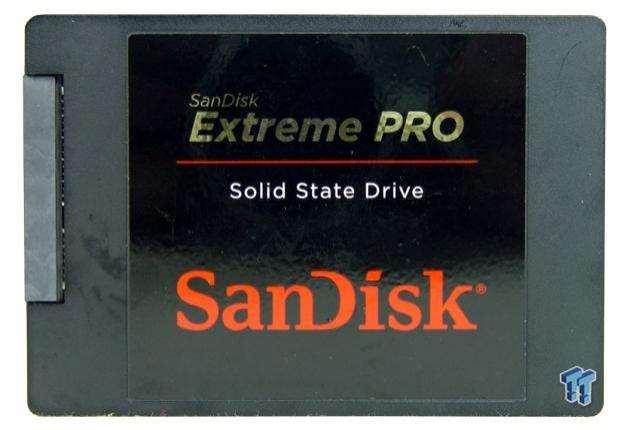
In order to get the first shot at testing the Extreme PRO, we received all three capacity sizes in bare drive form, without the retail package. The retail package does include a 7mm to 9.5mm adapter bracket.
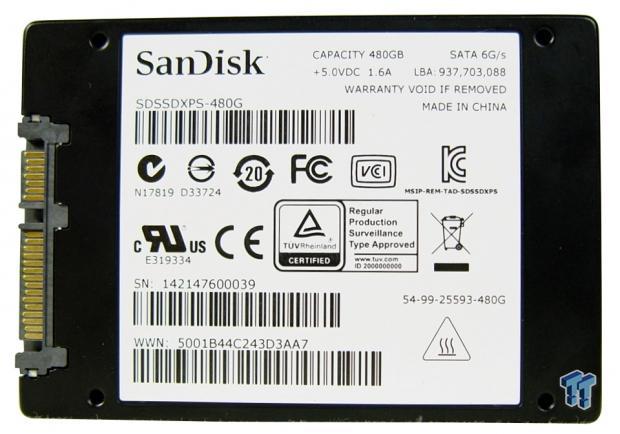
The Extreme PRO styling dates back to the original Extreme SSD. The label on the back of the drive gives us the model number, capacity size, and serial number.


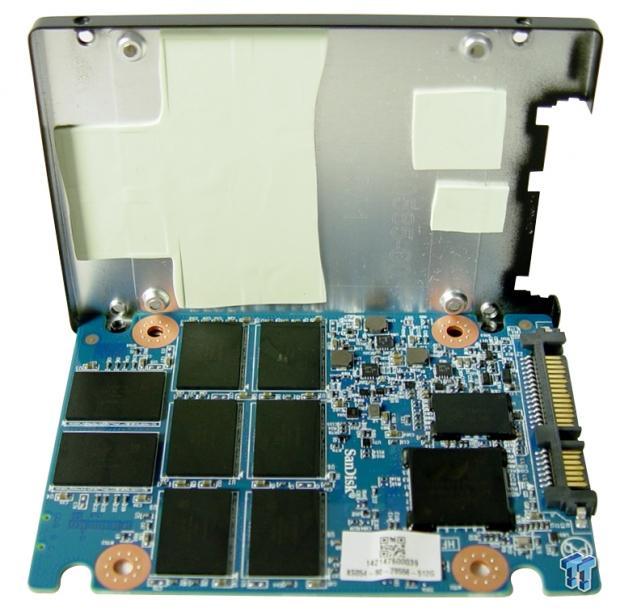
The Extreme PRO uses the same Marvell 88SS9187 controller found in the Extreme II, but the clock frequency has increased from the previous generation. SanDisk made sure to keep the internal components cool by using the case as a heat sink.
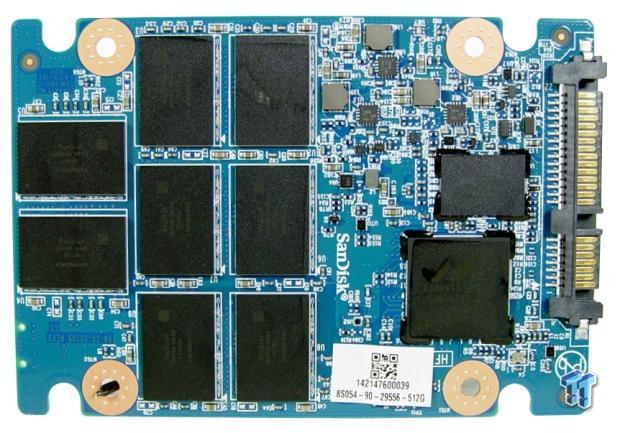
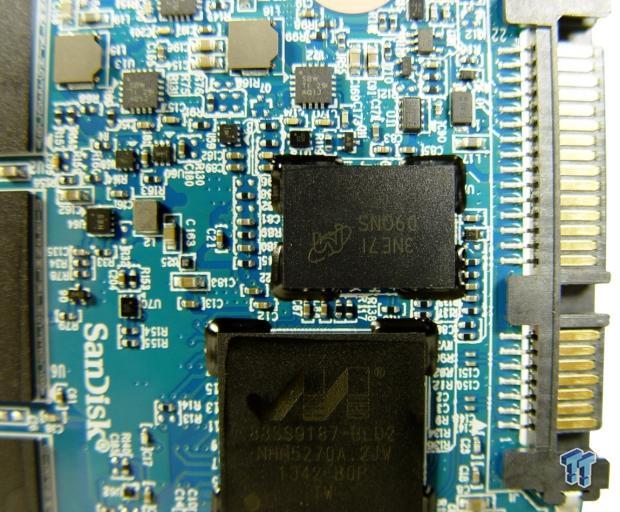
The controller and DRAM have epoxy that keeps the components firmly planted to the PCB. We rarely see this on consumer SSDs. Every military grade SSD we've seen uses epoxy, though.
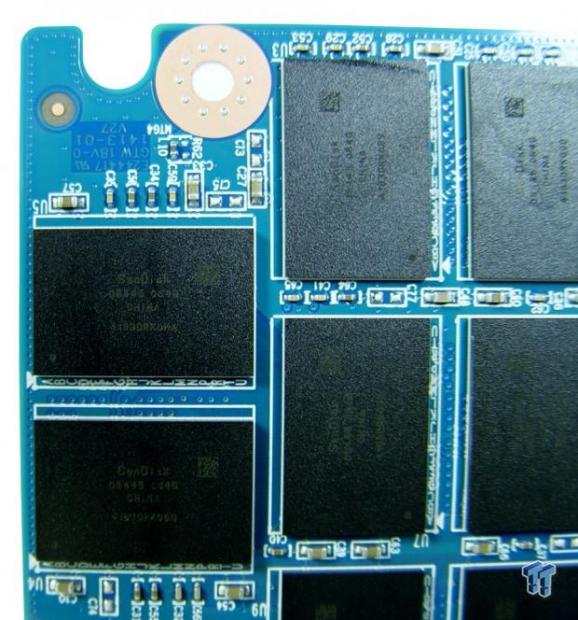
There are eight NAND flash packages on the Extreme PRO 480GB SSD. These are SanDisk's latest 1Ynm Toggle flash.
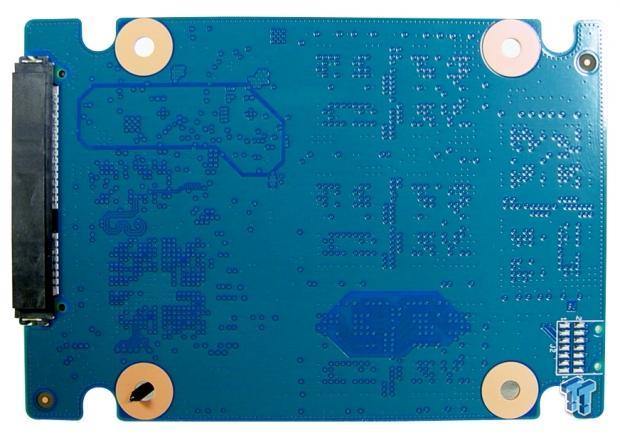
All of the surface-mount components are on the same side.
Test System Setup and ATTO Baseline Performance
Desktop Test System
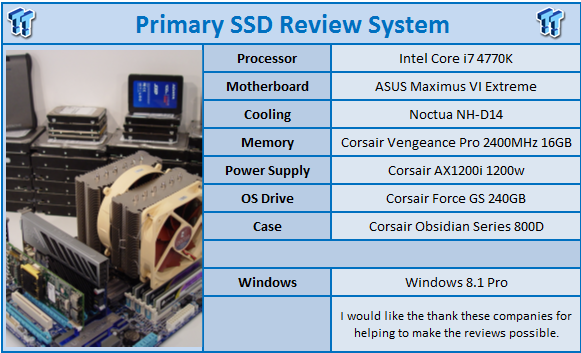
Lenovo W530 - Mobile Workstation
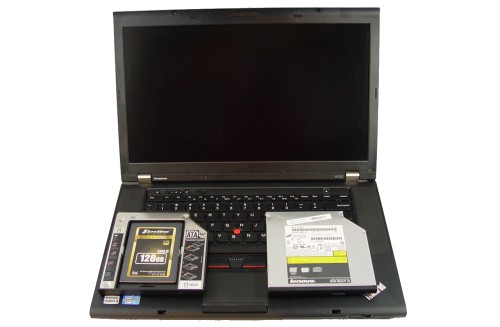
We use two systems for SSD testing. The desktop runs a majority of the tests, and the Lenovo W530 runs the notebook power tests as well as the real-world file transfer benchmark.
ATTO - Baseline Performance
Version and / or Patch Used: 2.34
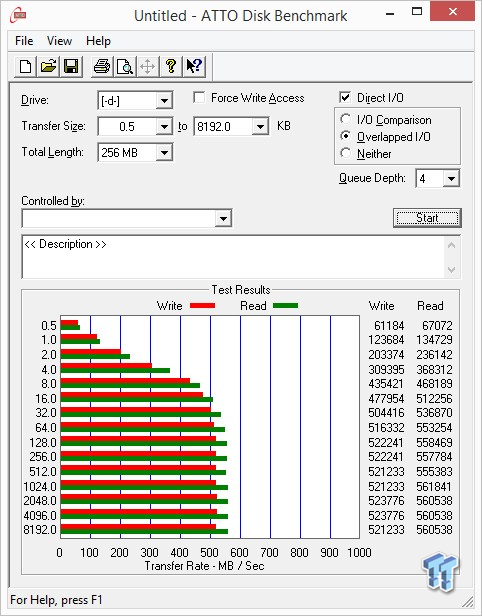
SanDisk uses Crystal Disk Mark for their specification numbers, but to stay consistent with our other reviews, we still use ATTO with a queue depth of four. In our test, we measured the sequential performance of the Extreme PRO 480GB at 561 MB/s read and nearly 524 MB/s write.
Benchmarks - Sequential Performance
HD Tune PRO - Sequential Performance
Version and / or Patch Used: 4.55
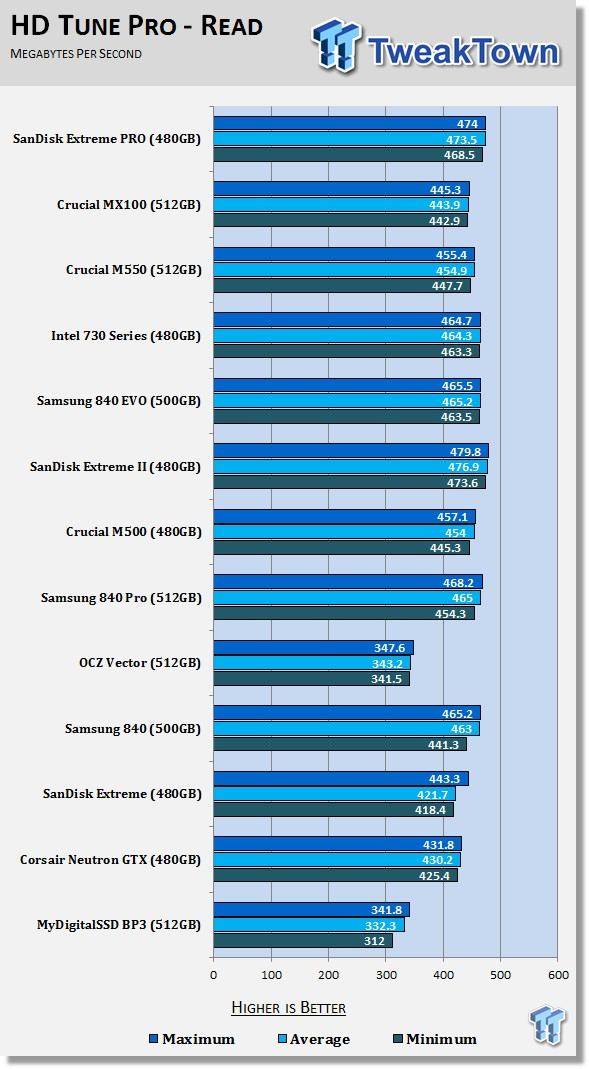
With the drive in a clean state, we start to wear the flash down with a read and write across the full span of the user LBA area. This test really starts out the whole theme of the Extreme PRO; it's a cut above every other drive on the market. In HD Tune Pro, using 64Kb sequential reads, the drive delivers an average of 473.5 MB/s. The top end of the same is 474 MB/s, and the other end is 468.5 MB/s.
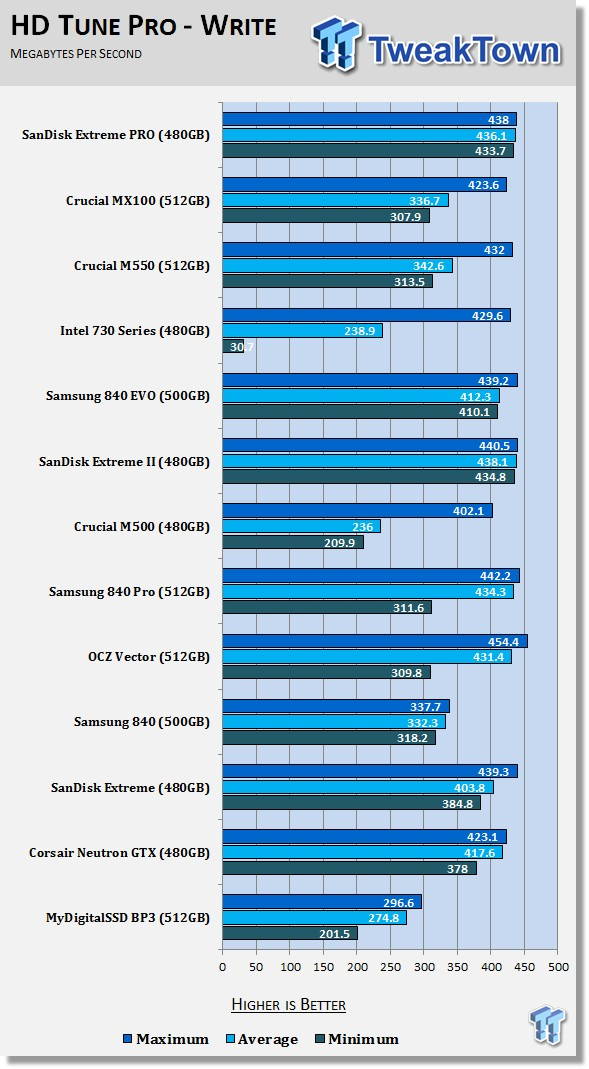
Writing data is what wears the drive's flash down to a steady state. Even in this test at a queue depth of one, you can see the other drives start to lose performance as the write speeds 'wave' up and down as blocks take the first writes. Two drives on the chart, the Extreme PRO and Extreme II, produce the tightest write speed group.
HD Tach - Sequential Write Performance after Random Writes
Version and / or Patch Used: 3.0.4.0
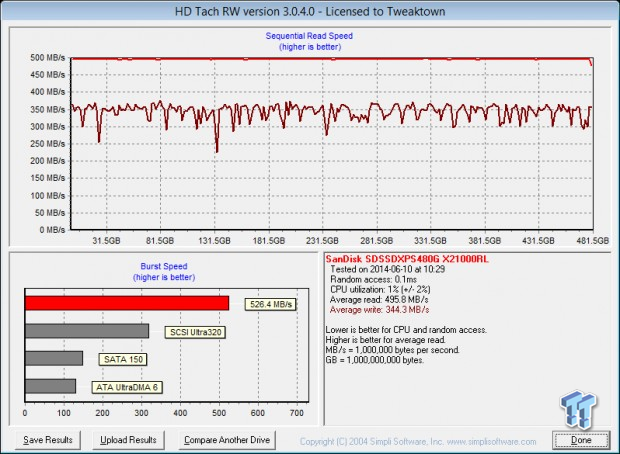
Here we see the Extreme PRO 480GB SSD's sequential test after a reasonable number of random writes. At the time of the test, the drive is managing garbage collection in order to write the new 128Kb data to the flash. The write performance drops to 225 MB/s in one area, but for the most part, the write speeds hover between 300 MB/s and 350 MB/s.
Benchmarks - Anvil Storage Utilities
Anvil Storage Utilities
Version and / or Patch Used: RC6
So what is Anvil Storage Utilities? First of all, it's a storage benchmark for SSDs and HDDs where you can check and monitor your performance. The Standard Storage Benchmark performs a series of tests; you can run a full test or just the read or the write test, or you can run a single test, i.e. 4k QD16.
Anvil Storage Utilities is not officially available yet, but we've been playing with the beta for several months now. The author, Anvil on several international forums, has been updating the software steadily and is adding new features every couple of months.
The software can be used several different ways to show different aspects for each drive. We've chosen to use this software to show the performance of a drive with two different data sets. The first is with compressible data, and the second data set is incompressible data. Several users have requested this data in our SSD reviews.
0-Fill Compressible Data
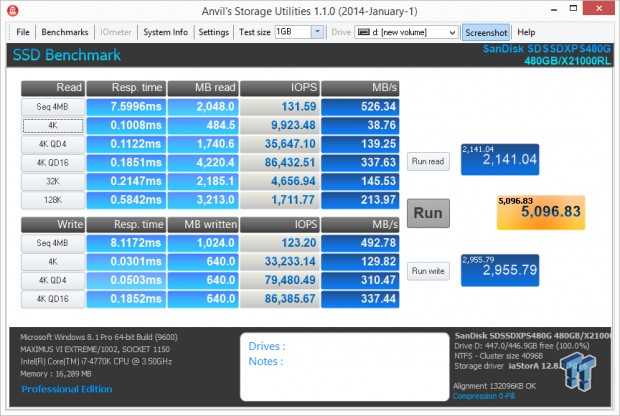
Incompressible Data
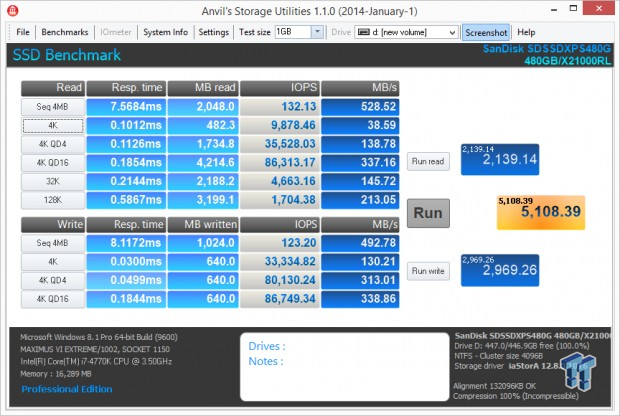
The Extreme PRO writes compressible and incompressible data at the same rate, so you will not lose performance when working with pictures, compressed audio, or video files.
Read IOPS through Queue Depth
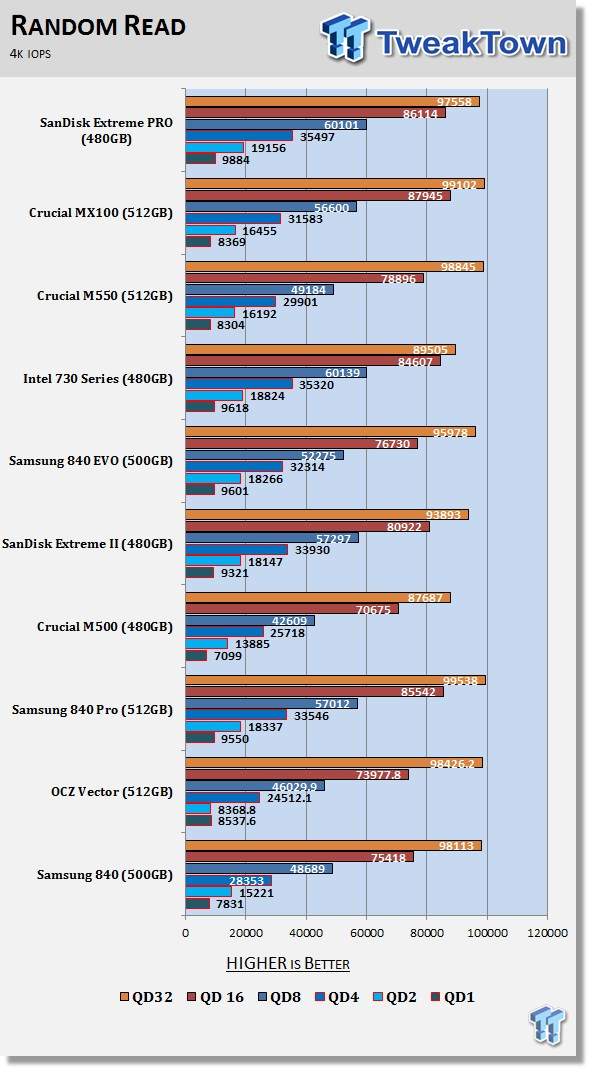
The magic number every company shoots for is 100k IOPS at QD32. It's a good target, but one that most of us shouldn't be concerned with as we rarely reach such a high queue. We look for low queue depth performance, highlighted in red on the charts. Our magic number is 10k IOPS at QD1 and a nice scale as depth doubles. The Extreme PRO 480GB gets very close to the 10k IOPS performance rating at QD1 and nearly doubles at QD2 and then QD4. This is exactly what you want to see in a consumer SSD.
Write IOPS through Queue Depth
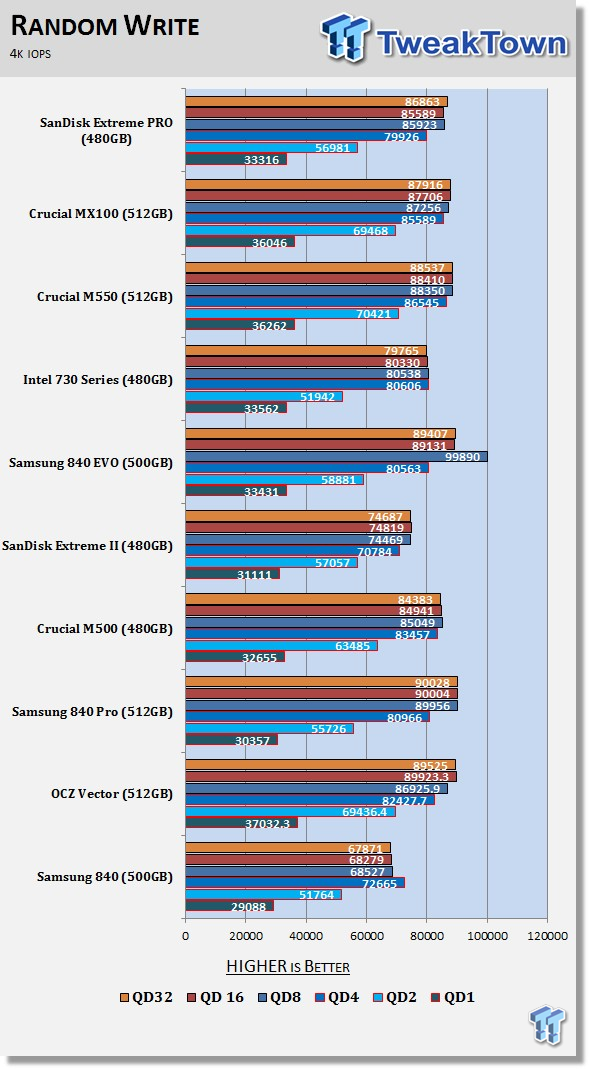
The Extreme PRO 480GB delivers just over 33k write IOPS at QD1, and the drive scales well as the depth increases. We hit just over 86k write IOPS in our test system running at stock i7-4770K clock speeds. An overclocked system would achieve SanDisk's 90k write IOPS claim.
Benchmarks - PCMark Vantage (Drives with Data Testing)
Version and / or Patch Used: 1.0.0
For a complete breakdown on the Drives with Data Testing, please read this article. You will be able to perform this test at home with the files PROvided in the article; full instructions are included.
Brief Methodology
SSDs perform differently when used for a period of time and when data is already present on the drive. The purpose of the Drives with Data testing is to show how a drive performs in these 'dirty' states. SSDs also need time to recover, either with TRIM or onboard garbage collection methods.
Drives with Data Testing - 25%, 50%, 75% Full States and Dirty / Empty Test
Files needed for 60 (64GB), 120 (128GB), 240 (256GB)
60GB Fill - 15GB, 30GB, 45GB
120GB Fill - 30GB, 60GB, 90GB
240GB Fill - 60GB, 120GB, 160GB
Empty but Dirty - a test run just after the fill tests and shows if a drive needs time to recover or if performance is instantly restored.

The Drives with Data test is about to be phased out since we give the drives too long to recover and because we found the new PCMark 8 2.0 Advanced Test to be superior. The older version built on Vantage is still a good method to look at performance with dirty flash and data on the drive. The long recovery time doesn't give us as accurate of a result as the new test.
PCMark 8 Consistency Test
Futuremark PCMark 8 Extended - Consistency Test
Version and / or Patch Used: 2.0.228
Heavy Usage Model:
FutureMark's PCMark 8 allows us to wear the test drive down to a reasonable consumer steady state and then watch the drive recover on its own through garbage collection. To do that, the drive gets pushed down to steady state with random writes, and then idle time between a number of tests allows the drive to recover.
Precondition Phase:
1. Write to the drive sequentially through up to the reported capacity with random data.
2. Write the drive through a second time (to take care of overprovisioning).
Degradation Phase:
1. Run writes of random size between 8*512 and 2048*512 bytes on random offsets for 10 minutes.
2. Run performance test (one pass only).
3. Repeat 1 and 2 for 8 times, and on each pass increase the duration of random writes by 5 minutes.
Steady state Phase:
1. Run writes of random size between 8*512 and 2048*512 bytes on random offsets for 50 minutes.
2. Run performance test (one pass only).
3. Repeat 1 and 2 for 5 times.
Recovery Phase:
1. Idle for 5 minutes.
2. Run performance test (one pass only).
3. Repeat 1 and 2 for 5 times.
Storage Bandwidth
PCMark 8's Consistency test provides a ton of data output that we use to judge a drive's performance.
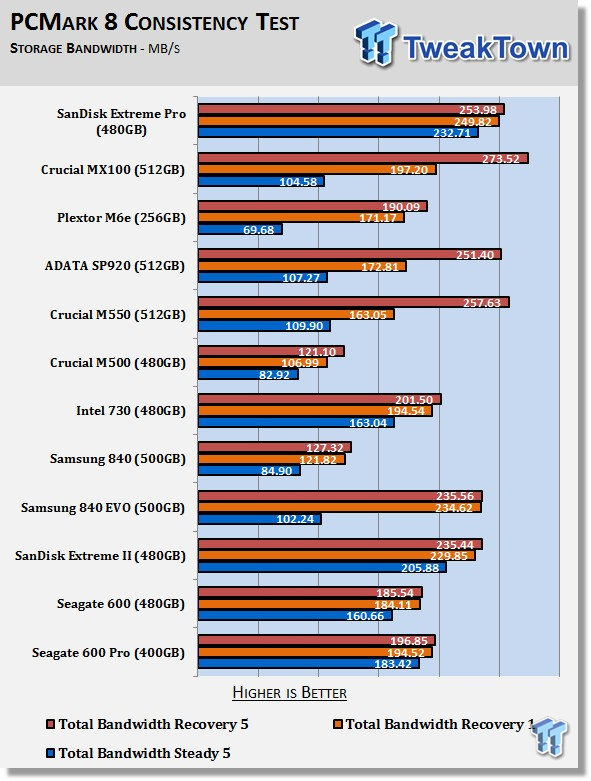
The SanDisk Extreme II was the king of consistent performance, until the Extreme PRO arrived. The PRO model takes the same tight performance and pushes it out further. The steady state for the Extreme II measured in at 205 MB/s. The PRO increases the bandwidth to 232 MB/s. That doesn't sound like a large margin, but when you omit the Extreme II, the Extreme PRO delivers nearly 50 MB/s more bandwidth in steady state over its closest rival.
Storage Bandwidth - All Tests
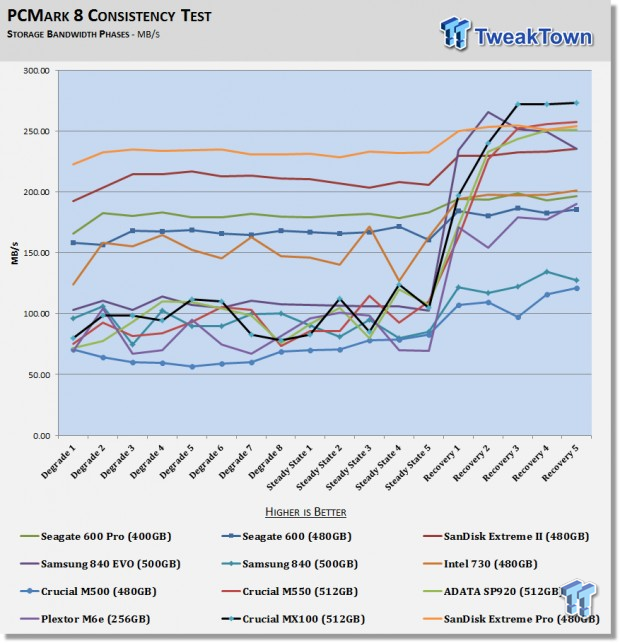
The 50 MB/s number comes from the worst-case performance group, a place where many gamers find their SSDs after installing several games in succession.
PCMark 8 Consistency Test - Continued
Total Access Time
The access time test measures the total latency across all 18 tests. This is one of the most important tests we run at this time for consumer SSDs. When your latency is low, your computer feels fast; it's just that simple.
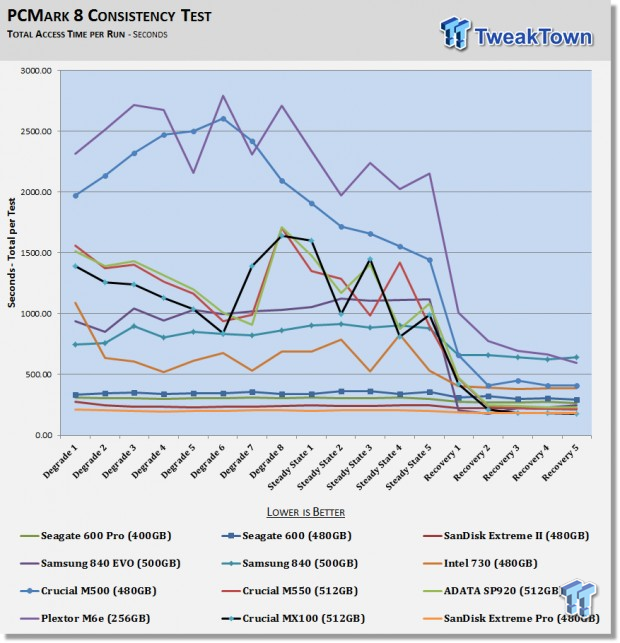
Throughput isn't everything. It's always nice to be able to transfer files at 300 MB/s on demand, but having instant action after issuing a command is more important in day-to-day tasks. In the chart above, we see the total latency for each run with all of the tests in each group. The SanDisk Extreme PRO does deviate a great deal and delivers the absolute best user experience of any consumer SSD we've ever tested.
Disk Busy Time
In the final test, we measure the amount of time the drive worked to read and write the data to complete the test. When a drive is active, it uses more power, so the faster it can complete the tasks, the faster it can fall into a low power state.
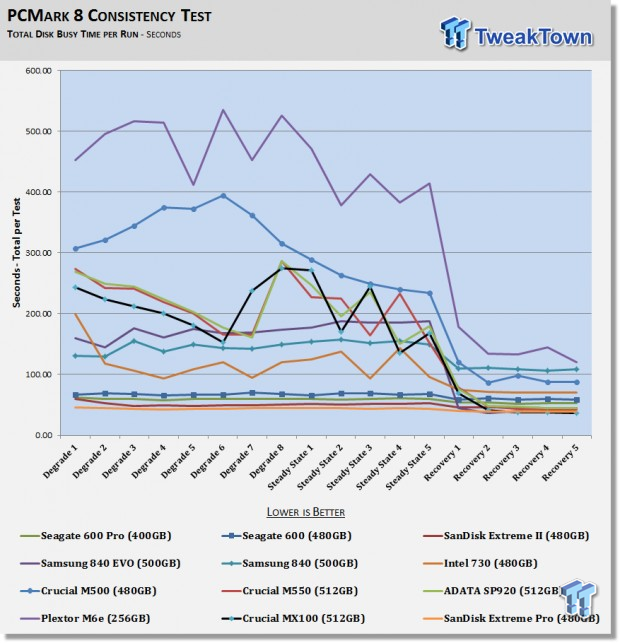
The Extreme PRO manages to move the workload faster than the other drives on the chart. This allows the drive to complete the task and then drop to a lower power state faster. In notebook systems, this can increase the battery life.
Benchmarks - Notebook Battery Life
Bapco MobileMark
Version and / or Patch Used: 2012 1.5
Note: In this test, we use the Lenovo W530 Mobile Workstation and a SuperSpeed S301 SLC 128GB SSD to move a 15GB block of data to and from the target drive. This is part of our real-world test regiment. Roughly 45GB of data resides on the target drive before the '15GB Block' is transferred. The 15GB Block is the same data we built for the Data on Disk Testing and is a mix of compressible and incompressible data.
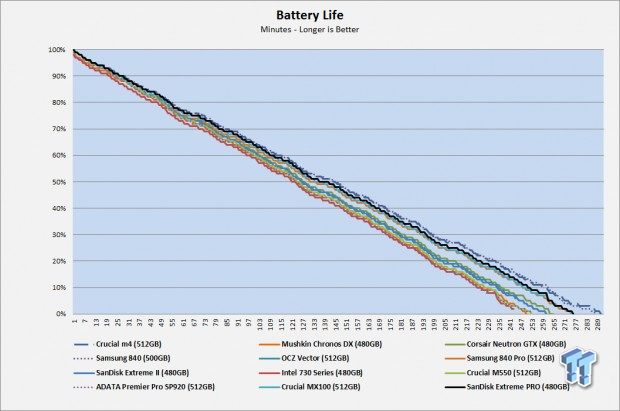
Our notebook in the Notebook Battery Life test uses an Ivy Bridge processor, so it doesn't take advantage of DEVSLP. Haswell based notebooks can deliver longer battery life with DEVSLP enabled because the SSD sips power at a very low rate when idle.
In our test, the Extreme PRO 480GB delivers a strong result at 277 minutes. This is in the upper tier for our test as configured.
Final Thoughts

Without a doubt, the SanDisk Extreme PRO is the fastest 512GB class SSD on the market. At $369.99, it's also on the higher-end of the price scale. For enthusiasts and many gamers, the price isn't that big of a deal since most already pay big money for other components to get the best user experience possible. If you are looking for the best, here it is.
The Extreme PRO launch also helps people looking for the bang-for-the-buck SSD. While a year old, the Extreme II has a lower price point and is still the second fastest consumer SSD on the market. I'm not sure how long Extreme II drives will be available, but the 480GB model is alive and well at several e-tail sites. A Google search turned up a price of just $287.00 for the Extreme II 480GB. At that price, the Extreme II 480GB is the best bang-for-the-buck deal going in the true performance SSD class.
The Extreme II won't last forever, though, and we don't expect inventory to last much longer. At that point, the Extreme PRO takes over in full, but that's not a bad thing. The Extreme PRO 480GB delivered everything we expected it to and then some. With a higher clock on the Marvell controller, we knew this drive would be fast, but we didn't expect it to do as well as it did in our notebook battery life test. With a newer notebook, one based on Haswell, the Extreme PRO would deliver even better results.
The Extreme PRO checks a lot of boxes, and we caught some grief after the 960GB review because we didn't talk about one of them. The Extreme PRO doesn't support eDrive or other hardware based encryption. SanDisk has a specific model for business users looking for encryption: X300s. At this time, we don't think hardware encryption is a relevant topic for most users. After speaking with leading e-tailers, the number of questions coming in about hardware encryption is very small. At the same time, it's difficult to line all of the pieces up together to make it work, as well.
Users need a notebook with everything sorted, and that's not an easy task at this time. Some systems that claim compatibility fall short, and many other notebook product pages omit the compatibility information altogether. If you really want full disk hardware encryption, you have to research and then hope all of the pieces fall into place. Until the industry gets the issues worked out, we're not spending a lot of time worrying about encryption on prosumer and gaming systems.
PRICING: You can find the SanDisk Extreme PRO (480GB) for sale below. The prices listed are valid at the time of writing but can change at any time. Click the link to see the very latest pricing for the best deal.
United States: The SanDisk Extreme PRO (480GB) retails for $369.99 at Amazon.

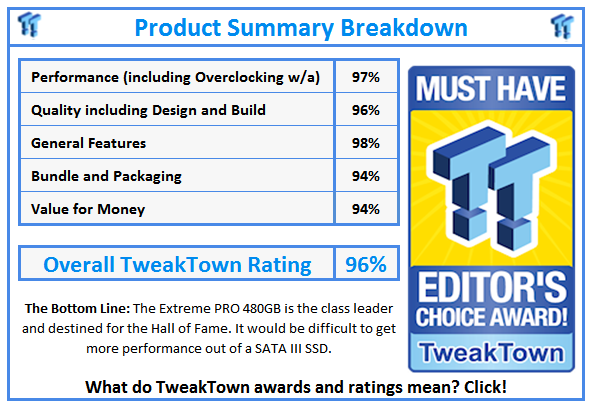
 United
States: Find other tech and computer products like this
over at
United
States: Find other tech and computer products like this
over at  United
Kingdom: Find other tech and computer products like this
over at
United
Kingdom: Find other tech and computer products like this
over at  Australia:
Find other tech and computer products like this over at
Australia:
Find other tech and computer products like this over at  Canada:
Find other tech and computer products like this over at
Canada:
Find other tech and computer products like this over at  Deutschland:
Finde andere Technik- und Computerprodukte wie dieses auf
Deutschland:
Finde andere Technik- und Computerprodukte wie dieses auf